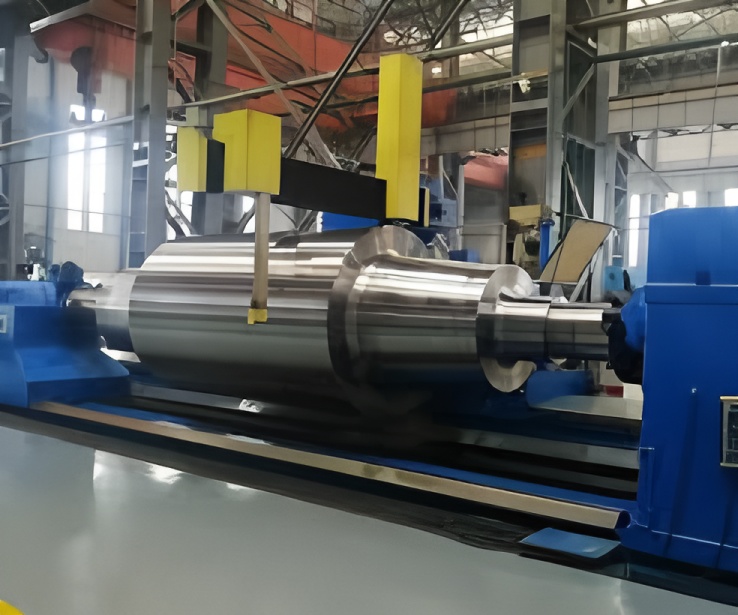This article uses infrared camera detection and theoretical analysis to explain the peeling mechanism of the oxide film on the surface of high-speed steel rolls, and takes effective measures to increase the handover cooling water to prevent the oxide film from peeling off.
Keyword: high-speed steel rolls
At the beginning of 2021, the rolling oil of the 1580 hot rolling mill unit could not be used due to the corrosion of the rolling oil system pipeline, and the probability of oxide film peeling was greatly increased. The temporary roll replacement of the oxide scale was an average of 14 times per month, with the highest number reaching 21 times in a month. At the same time, the iron oxide scale was blocked. The production rate has also increased significantly, which has a great impact on the production line.
This article uses infrared camera detection and theoretical analysis to explain the peeling mechanism of the oxide film on the surface of high-speed steel rolls, and takes effective measures to increase the handover cooling water to prevent the oxide film from peeling off.
Hss rolls Oxide film formation and peeling mechanism
Oxide film morphology
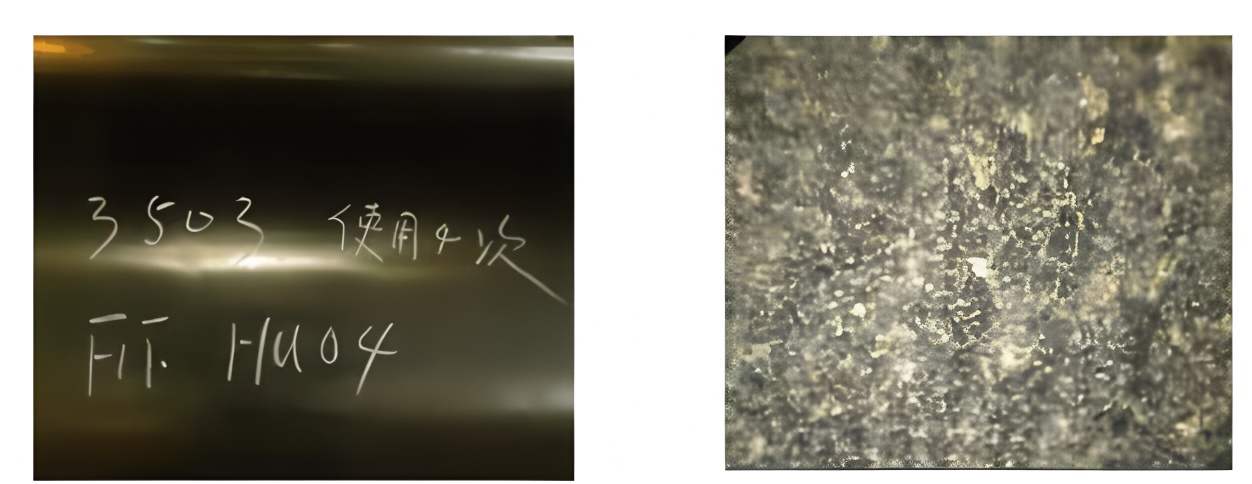
Normal: A thin silver-gray or light-blue oxide film is evenly distributed on the roller surface.
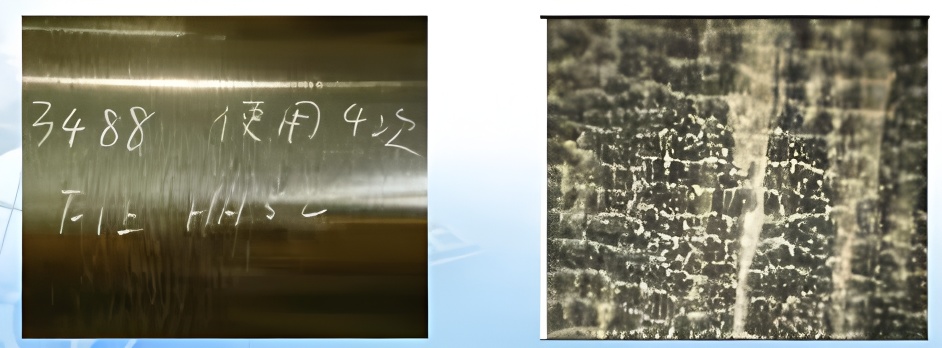
Peeling: When the color is dark blue or black, the thickness of the oxide film usually exceeds 3μm, and obvious cracks can be observed in the microscopic morphology.
Oxide film growth mechanism
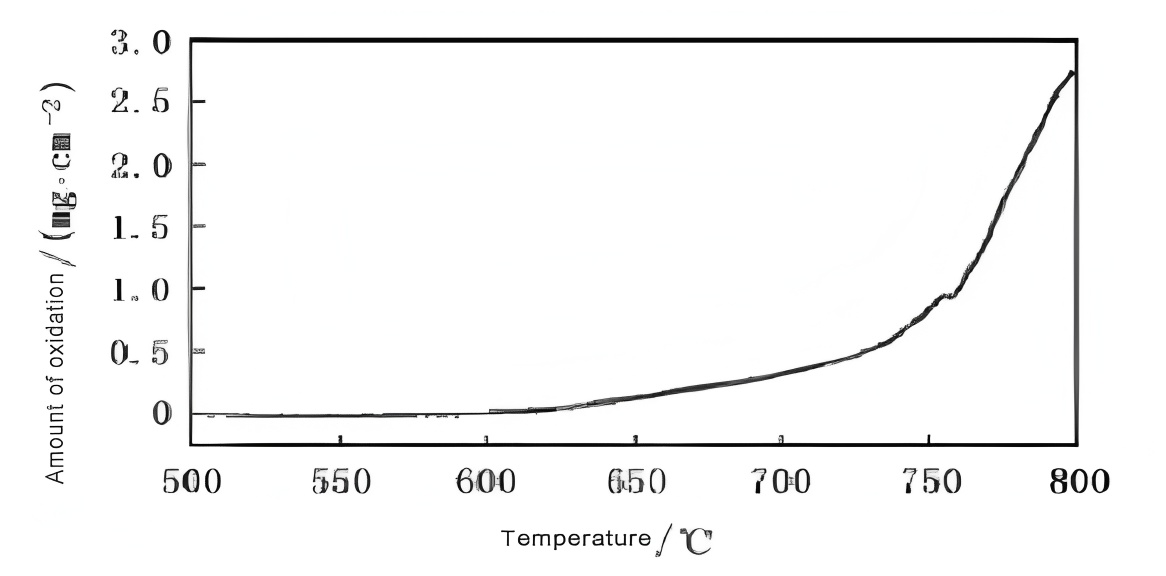
At 500~600°C, the oxidation rate is very slow due to the low oxidation free energy. At 600~700°C, the oxidation rate gradually accelerates. Above 750°C, the oxidation rate is very fast and the thickness increases.
Oxide film peeling mechanism
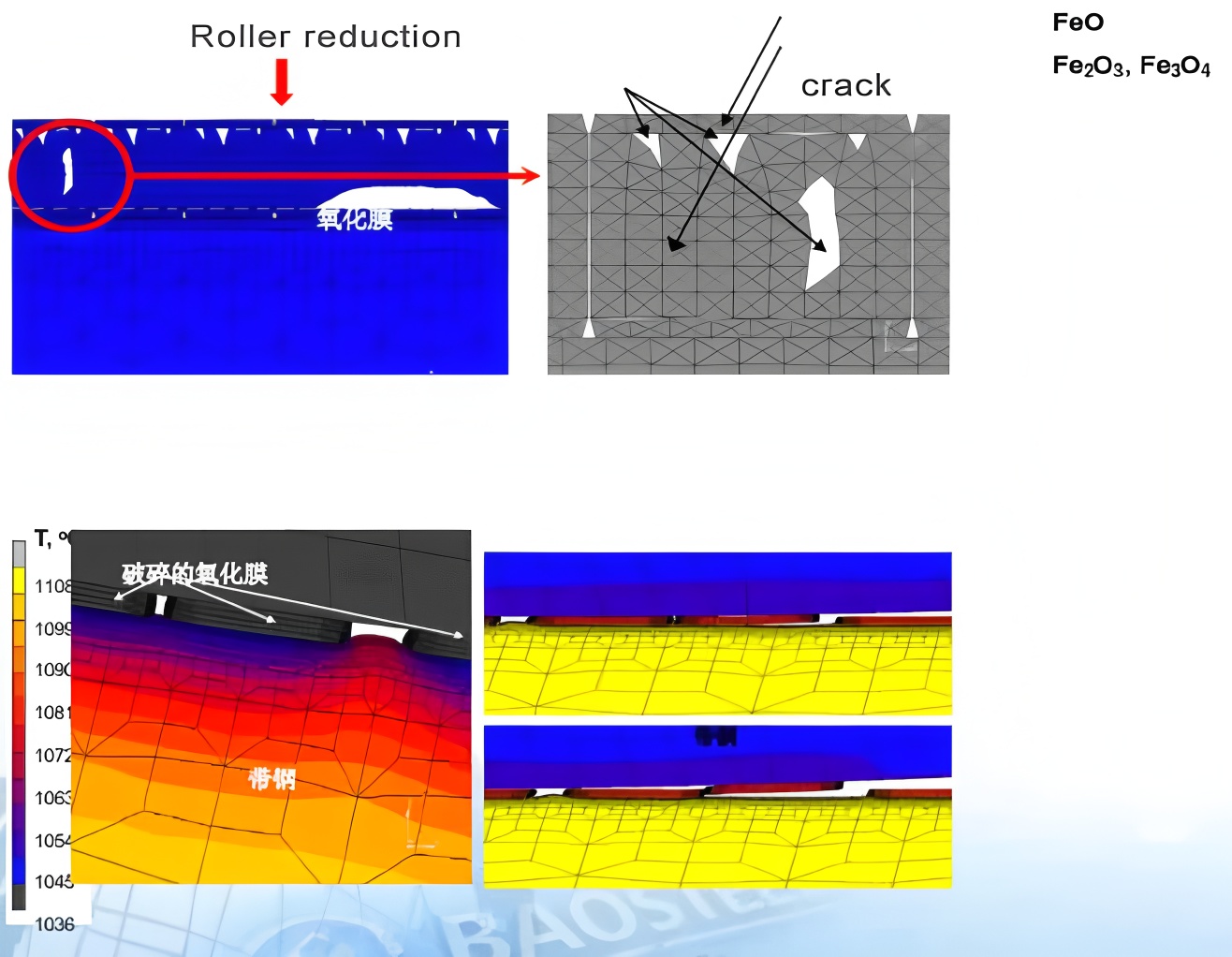
Under the repeated action of rolling force, the thickened oxide film initiates microcracks around the carbides; as the temperature increases, the oxide film further thickens, the shear strength and the bonding strength with the matrix decrease, and the cracks expand significantly. , causing the oxide film on the roller surface to fall off.
➢When the temperature rises above 600°C, the thickness of the oxide film increases rapidly and the cracks around the carbide expand significantly.
➢Under the interaction of rolling force, micro-cracks form in the oxide film around the carbide. The greater the rolling force, the easier it is for the oxide film to peel off;
Hss rolls Field test study on oxide film peeling
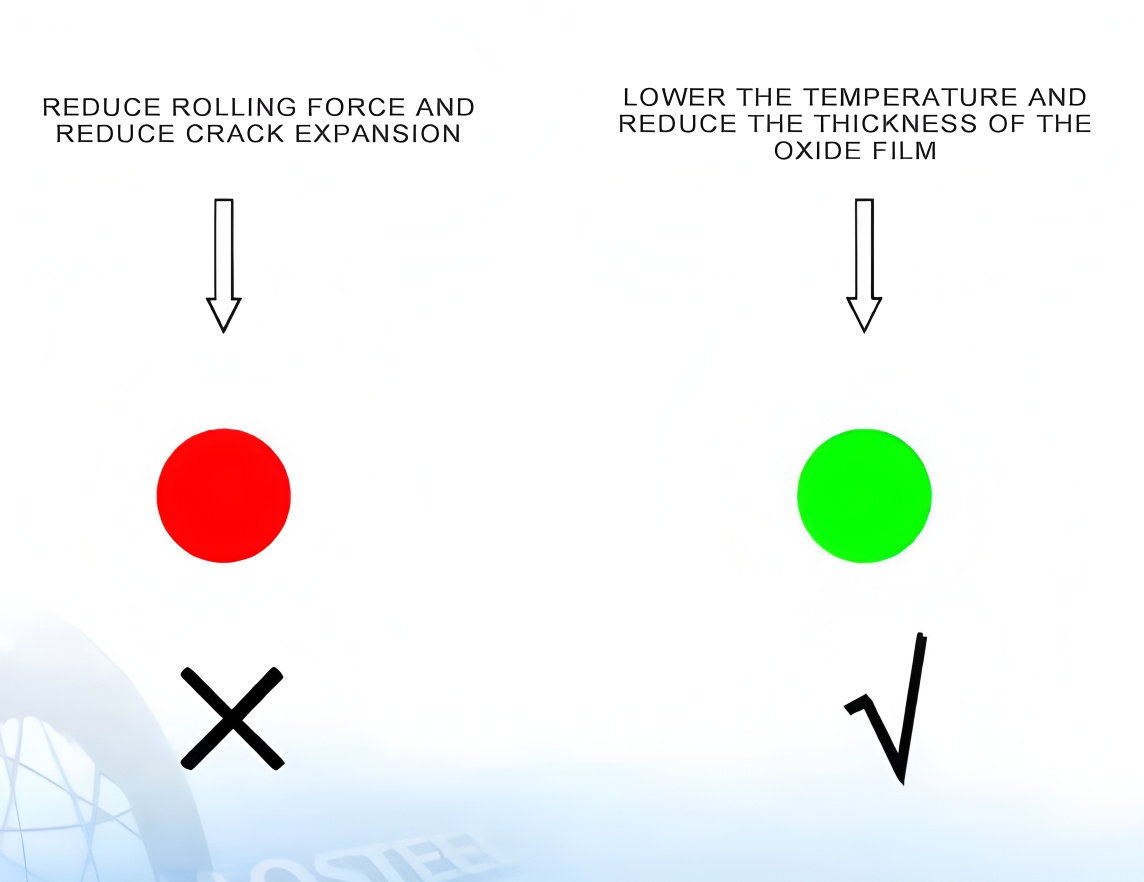
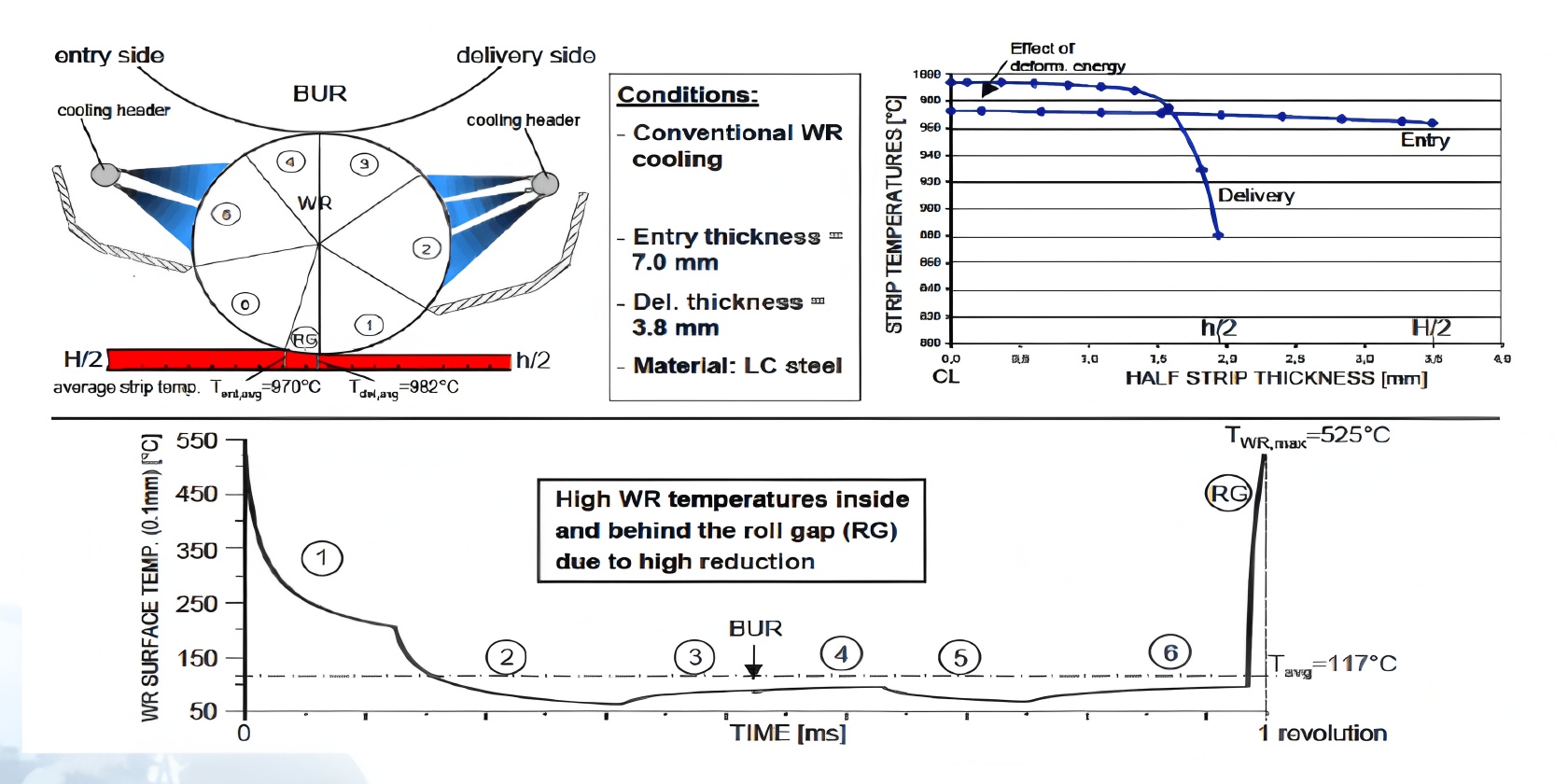
Research shows that the RG area is the moment when the steel is bitten, and the surface temperature of the roll rises to the highest. When the surface temperature of the strip reaches 970°C, the surface temperature of the roll can rise to 525°C. With air cooling and water cooling, the roll temperature will further decrease. After one cycle, the calculated average value is around 117°C.
Field test study on oxide film peeling
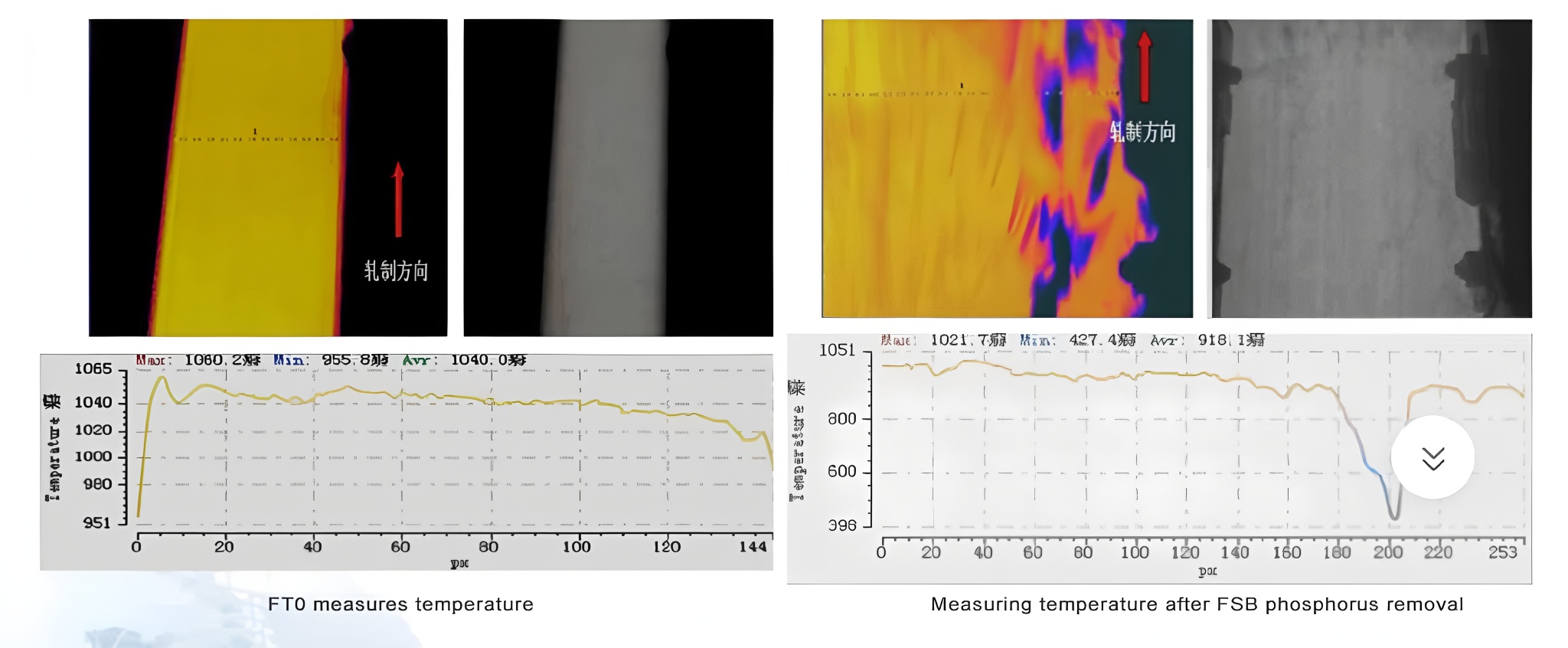
The test found that before FSB descaling, the average temperature of FT0 was around 1040°C. After FSB descaling, the temperature of the F1 frame before steel feeding dropped to around 1010°C. At this time, the temperature of the F1 frame will suddenly rise after the steel is bitten. The surface temperature will exceed 525’C and approach 600°C.
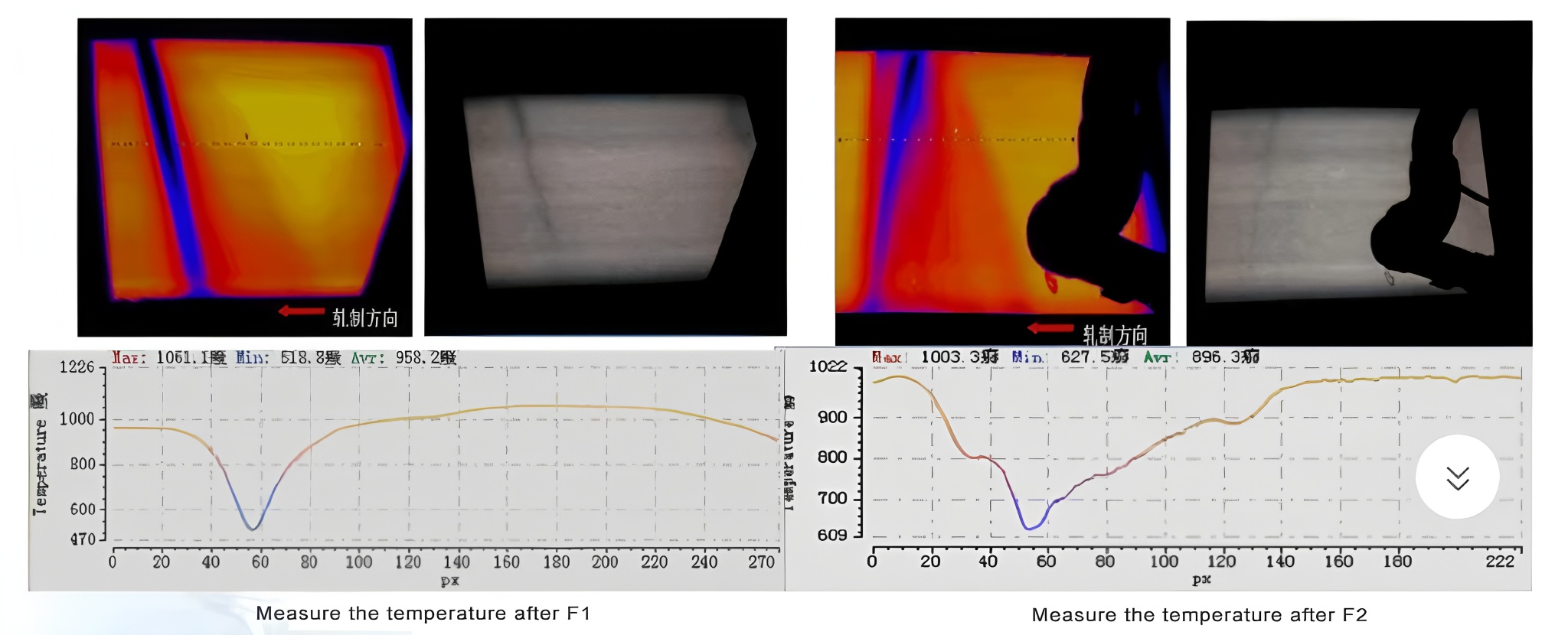
Due to the existence of deformation heat and core temperature gradient, the surface temperature of the strip after rolling in the F1 stand rises to about 1050°C. Side spraying of water cannot reduce the temperature very well. The surface temperature of the strip rises to about 970°C before running to the F2 frame. At this time, the contact temperature of the roll surface will be about 525°C:
The surface temperature of the strip after rolling in the F2 stand is around 1000°C, and the temperature does not change much before and after side spray water cooling. When reaching the F3 stand, the surface temperature of the strip steel is also maintained at around 1000°C. At this time, the contact temperature of the roll surface will be around 555°C.
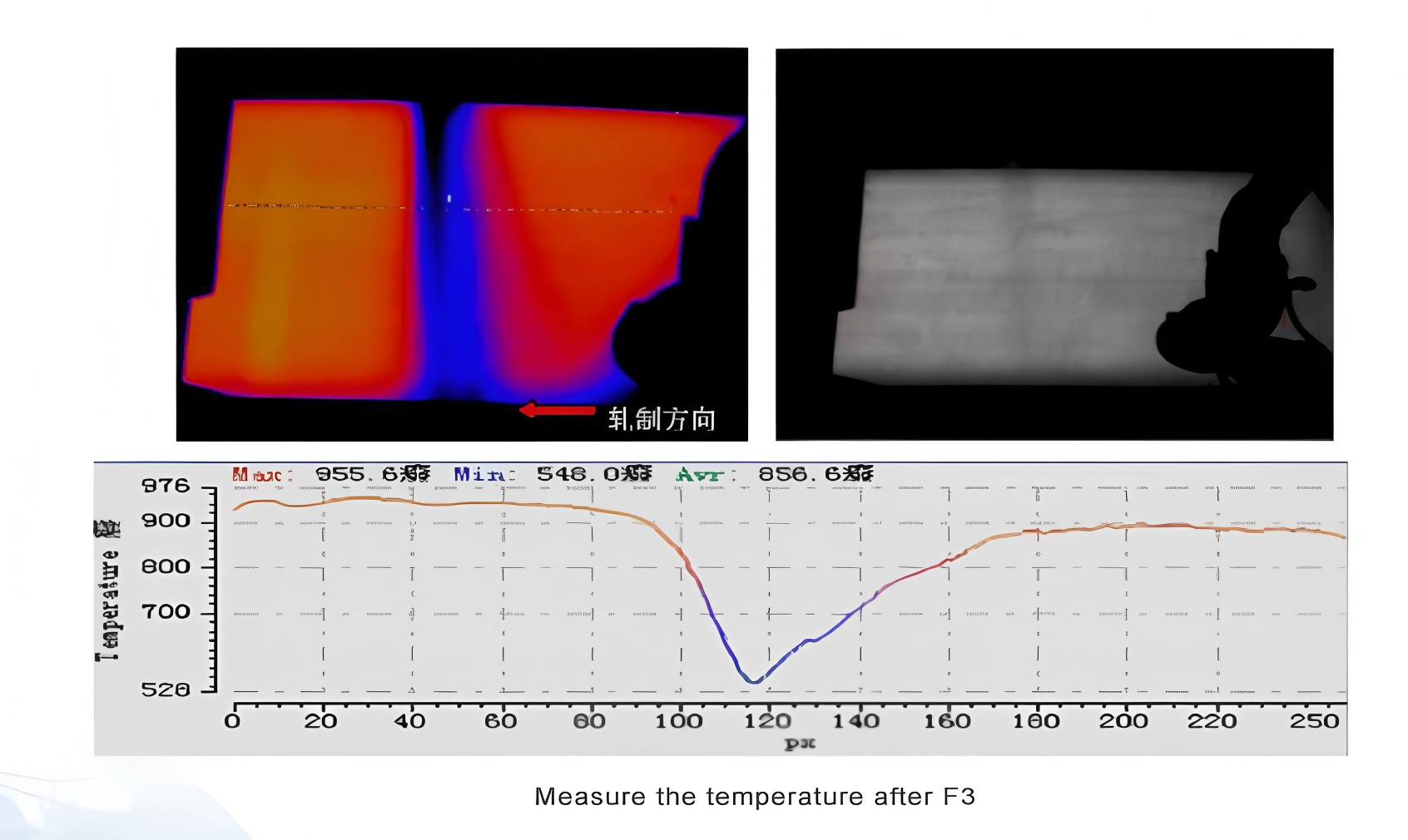
After rolling in the F3 stand, the surface temperature of the strip dropped to about 900°C. Although it later rose to about 950°C, the surface contact temperature of the F4 roll at this time will be lower than 525°C, about 500°C.
Hss rolls Countermeasures against oxide film peeling
The high temperature [RG area] at the moment when the roll contacts the strip is the key to the thickening of the oxide film.
Increase the cooling water for strip roll transfer
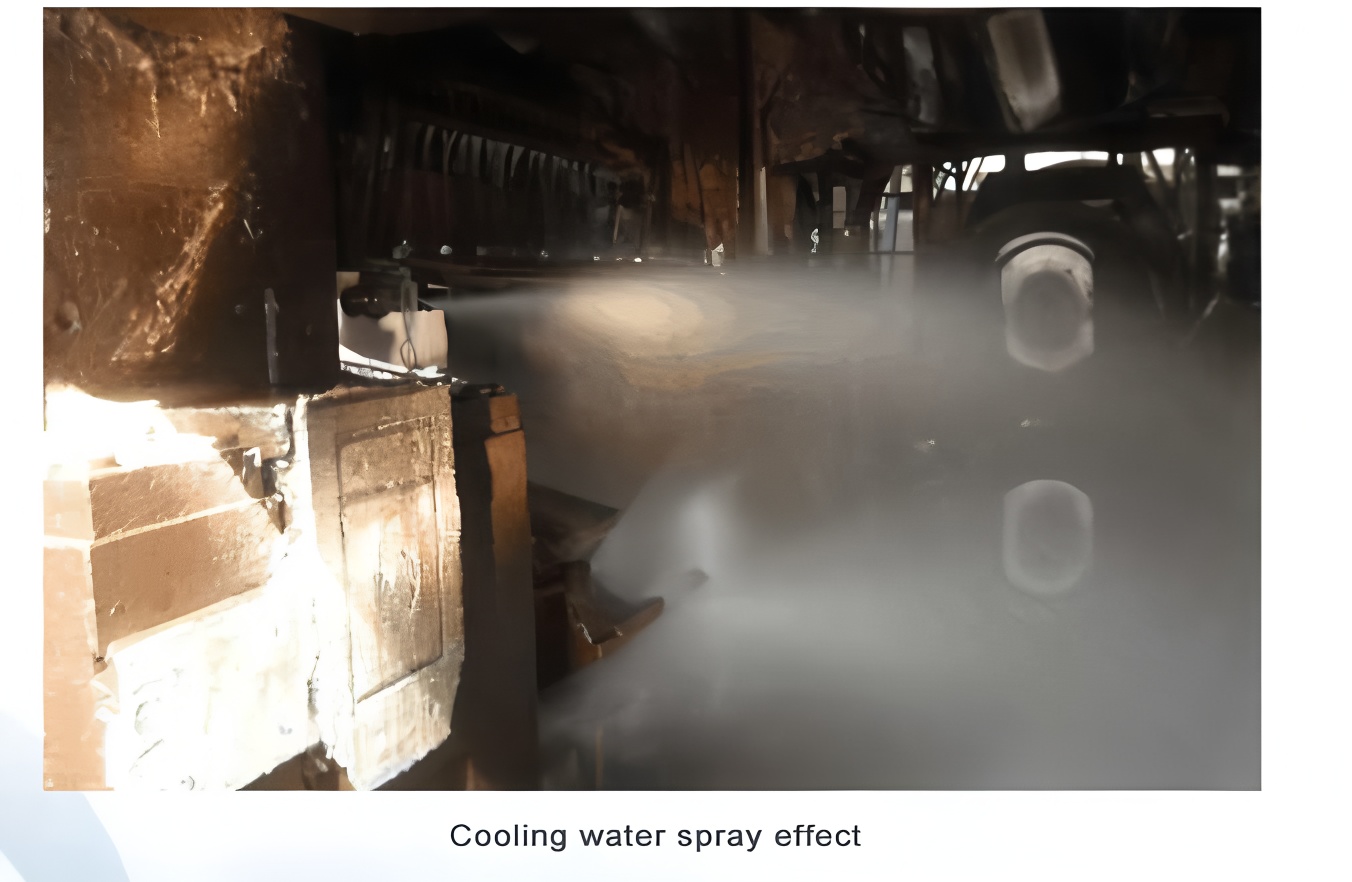
In order to reduce the surface temperature at the moment when the roll bites the steel, for the F2 and F3 stands, we use the rolling oil and water system and adjust the header angle so that the increased cooling water is directly sprayed to the interface between the strip and the roll. This achieves the purpose of cooling the roll surface.
① First of all, rolling oil cooling water is simply used, pressure: 0.4MPa, single frame flow: 96L/min. After use, the effect is not good. The roller temperature of the lower machine is high, reaching about 66°C, and there is peeling on the roller surface.
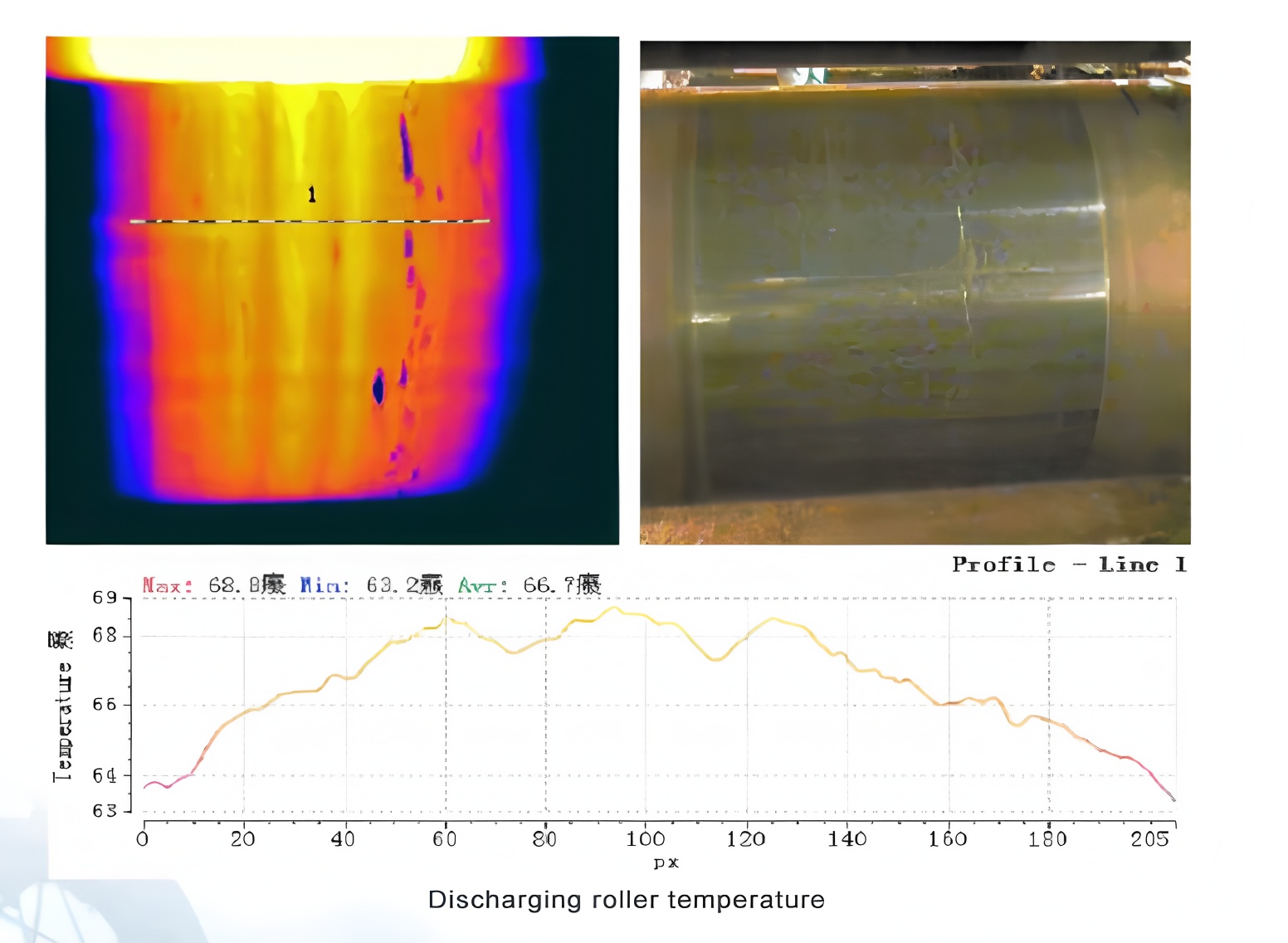
②Later, connect the rolling oil and water pipe to the roll cooling water system to increase the overall pressure to 1. 2MPa, and at the same time, the single-stand flow rate increases to 192L/min. After such adjustment, the overall temperature of the lower machine roller dropped to about 61°C, and the peeling condition of the roller surface was improved.
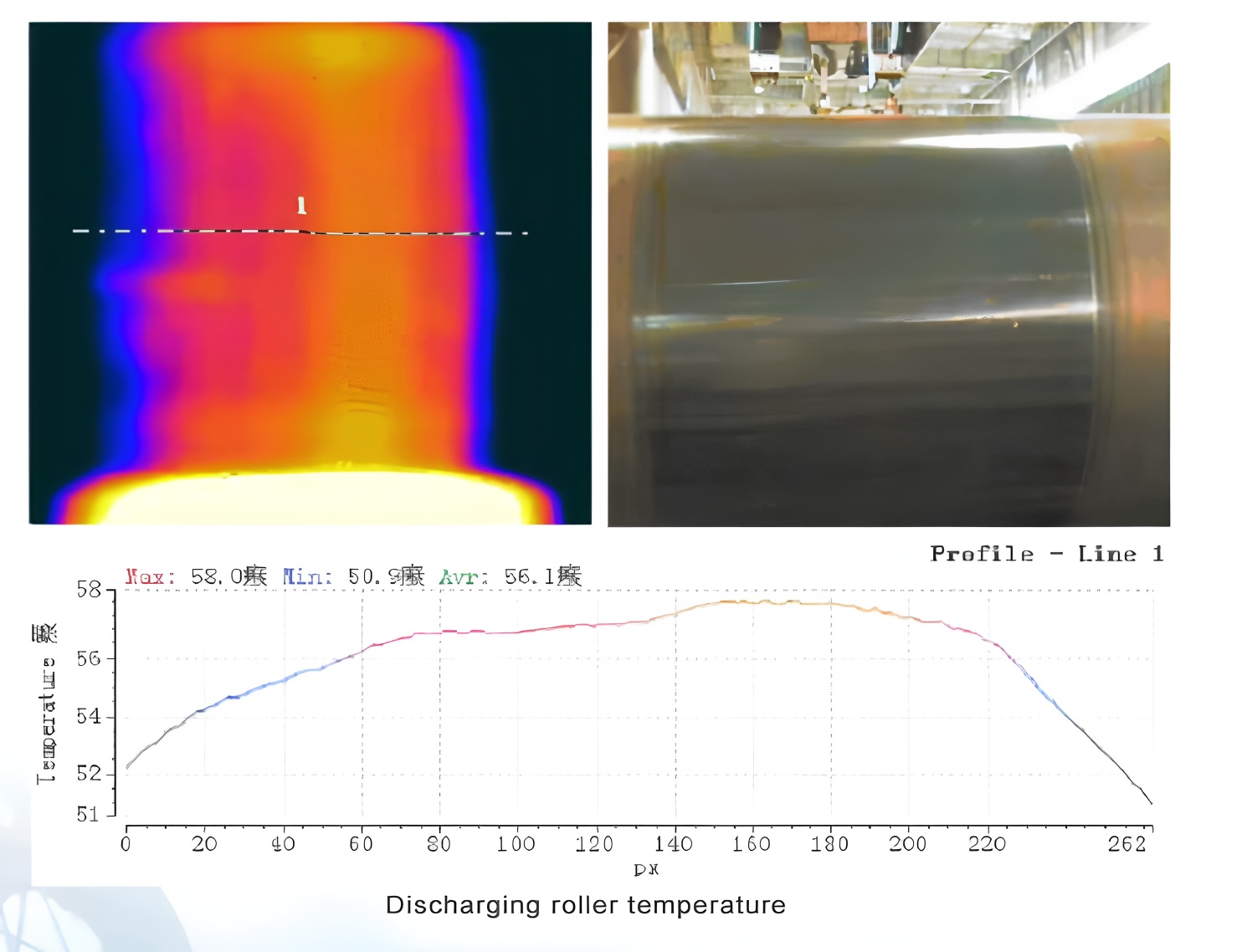
③ Then increase the nozzle flow rate and increase the flow rate of the single rack to 240L/min under the pressure of 1.2MPa. The temperature of the discharging roller dropped to about 56°C, and the roller surface was in good condition.
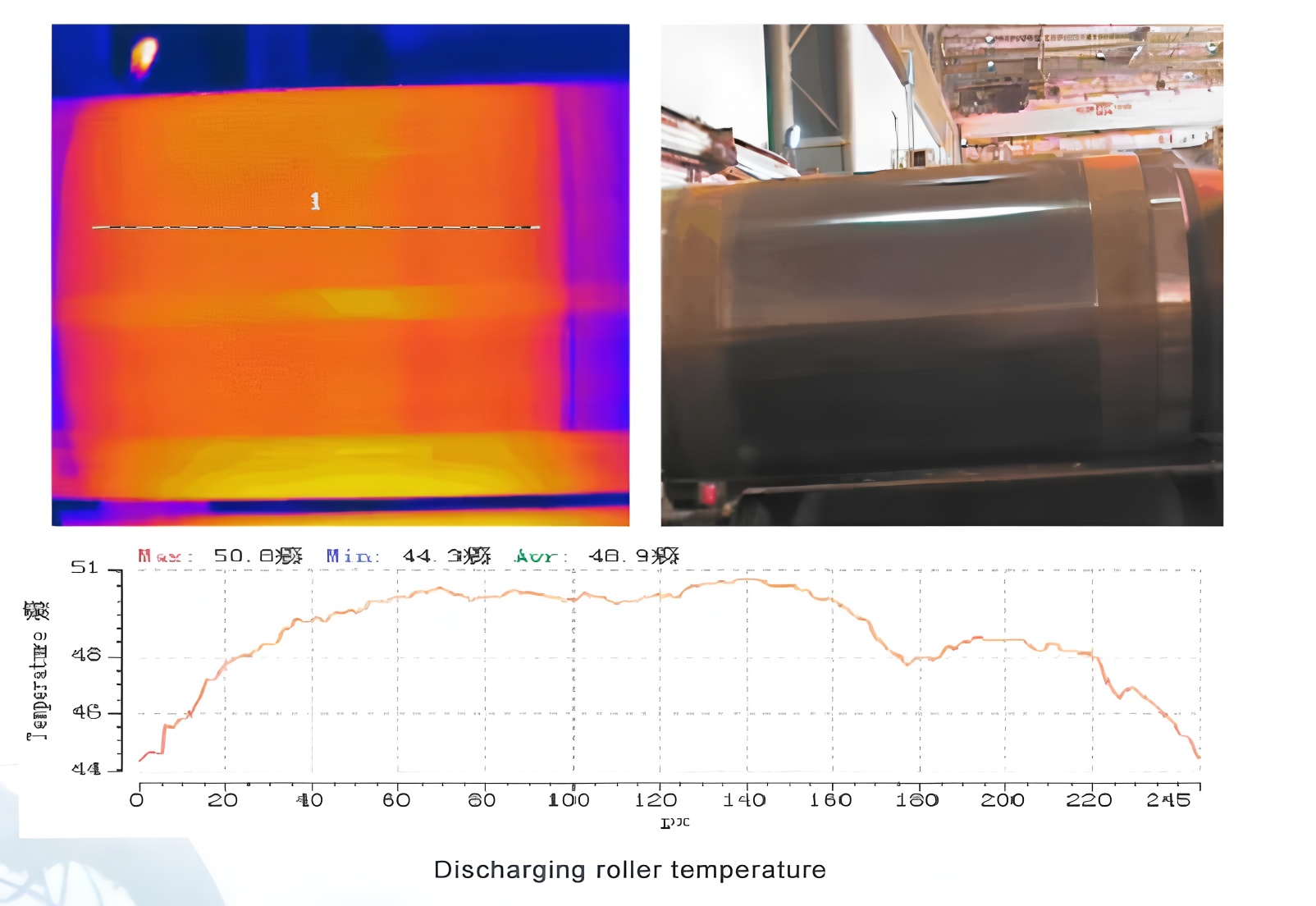
④Finally, the flow rate of the single frame is increased to 480L/min under the pressure of 1.2MPa, and the temperature of the roller is reduced to about 48.9°C, and the roller surface is in good condition.
Descaling water cools the surface
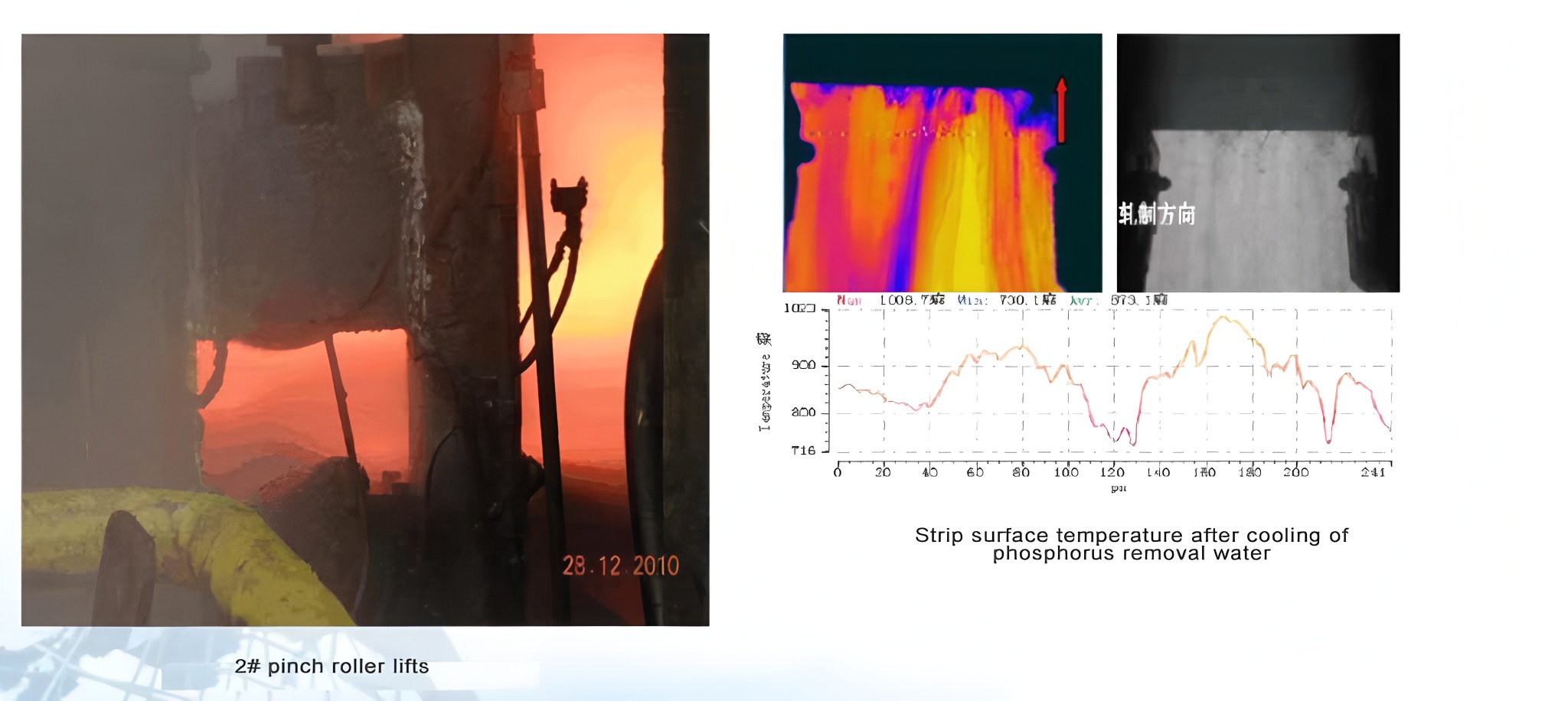
Since the F1 frame is not equipped with rolling oil and water pipes, the surface of the roll cannot be cooled during steel biting. Considering that F1 is close to the FSB descaling box, the descaling water can be used to cool the surface of the strip to achieve the purpose. After threading, lift the FSB2# pinch roller and use a large flow of descaling water to reduce the high temperature at the moment when the strip and the F1 roll come into contact. After testing, the surface temperature of the strip dropped from the original 1010°C to about 950°C.
Effect verification
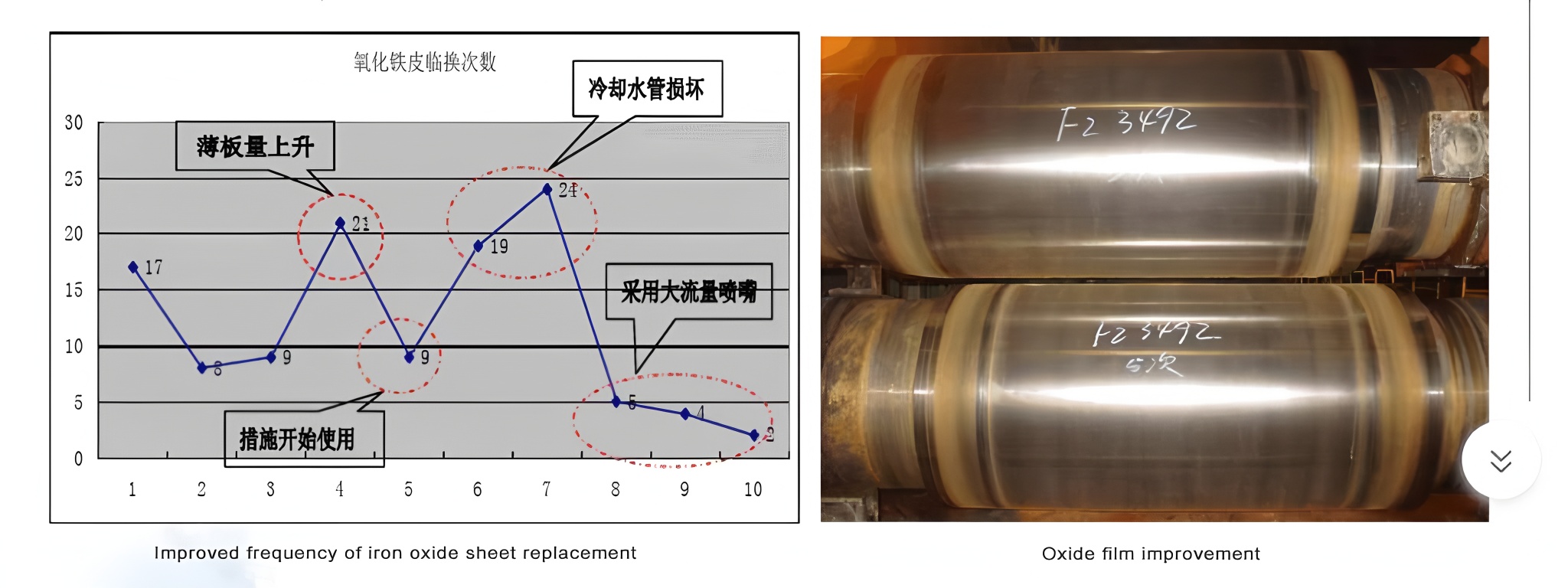
After the implementation of the measures, the phenomenon of oxide film peeling was significantly improved, and the number of temporary roll changes caused by oxide film peeling was also significantly reduced.
① When the temperature rises above 600°C, the thickness of the oxide film increases rapidly and the cracks around the carbide expand significantly;
②Under the interaction of rolling force, micro-cracks form in the oxide film around the carbides. The greater the rolling force, the easier it is for the oxide film to peel off;
③ Controlling the temperature at the moment of contact between the roll and the strip can effectively improve the probability of oxide film peeling;
④ By increasing the large pressure and large flow of cooling water to cool the contact surface between the strip and the roll, it can effectively prevent the roll oxide film from peeling off.

